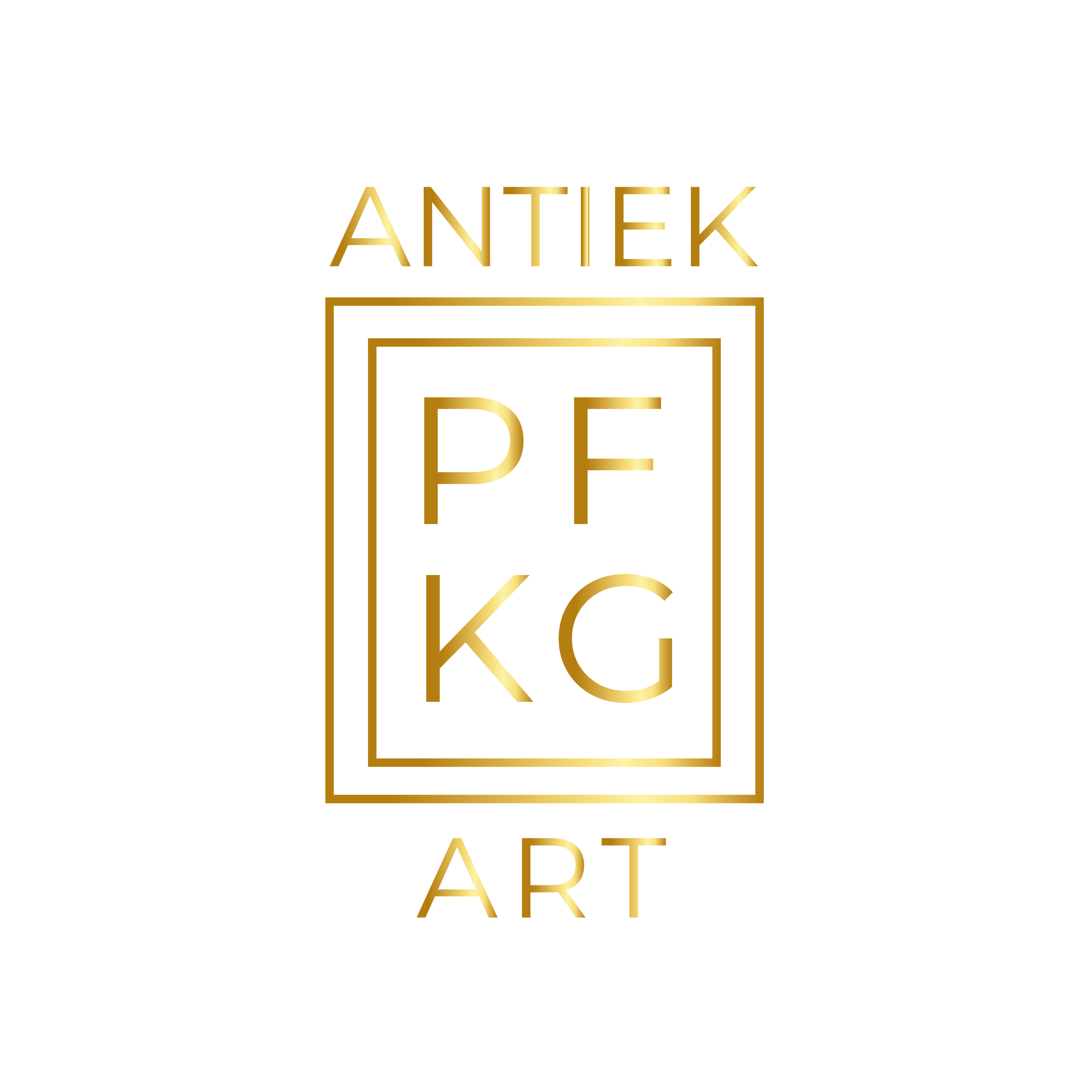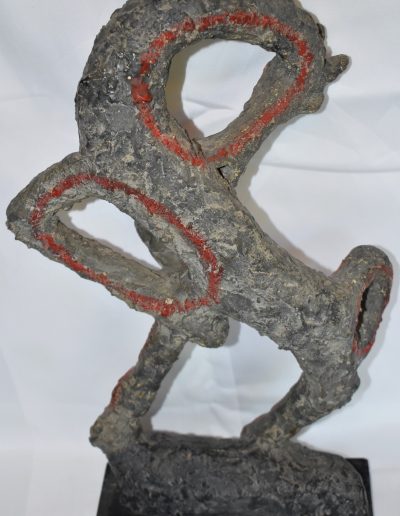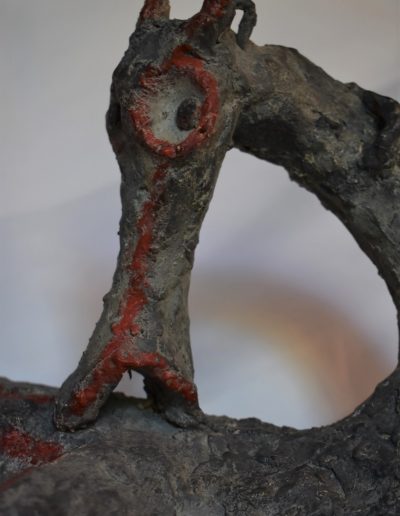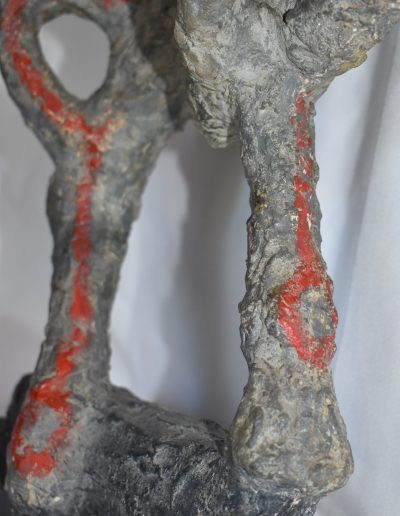Jean Lambert-Rucki (1888-1967) was born in Kraków, Poland. He studied at the Academy of Fine Arts in Krakow before leaving for Paris at the age of 20. He became a French citizen in 1932. He lived in the Montparnasse district where he made contacts with Poland’s Moise Kisling, Modigliani, Soutine, Tsuguharu Foujita, Leopols Survage and others. He exhibited in several galleries.
Lambert-Rucki was a sculptor and painter and exponent of the art deco style. He also collaborated with well-known furniture makers, in particular Jean Dunant. He worked in different styles such as Cubism. His work often shows the Tribal Art of Africa. Very famous are the totem poles in lacquered wood. In his paintings, mostly on cardboard, made around 1925, a small figure appears in the shadow over and over again.
Sculpture by Jean Lambert-Rucki (1888-1967) in polychrome hand-painted earthenware of a horse on a base and mounted on a wooden rectangular black painted base. Pièce unique and belonging to the collection of Mara & Léano Rucki, exhibited in 1990 in the Franka Berndt Bastille gallery in Paris. The horse prancing and standing on two legs with its neck and head turned at an angle of 90 °. Coarsely modeled earthenware decorated in a gray-green color, with red accents. The head rather has the shape of a seahorse.
Impeccable condition.
Provenance: famille de l’artist. One of the photos shows the handwritten statement of Alain Anceau who acquired this work in 1990 during the exhibition at the Franka Berndt Bastille gallery (see proof of purchase).









Reviews